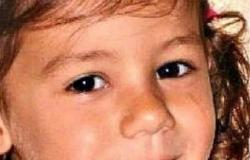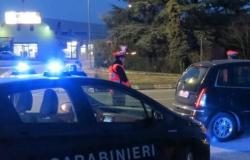From 20 June to 4 July and then from 19 to 26 September, exhibitions, workshops and performances of visual arts, theatre, dance, poetic readings, concerts, food and wine tastings and cultural trekking. The initiative aims to enhance the territories included in the municipalities of Faenza, Brisighella, Riolo Terme and Castel Bolognese
Bologna – A festival to enhance the area of the “blue clay gullies”, as defined by Leonardo da Vinci in the well-known “Hammer Code”, that geographical area between the territories of Faenza, Brisighella, Riolo Terme, Castel Bolognese, in the province of Ravenna , where panoramic terraces, breathtaking views, precious clays, thermal water sources, vineyards and prized crops alternate and which is the subject of countless stories, narrations and legends.
The gullies are what remains of the sandy bottoms of the prehistoric sea of millions of years ago and are now an area that is home to brooms, orchids and species that grow only among these clays, such as Cretaceous artemisia. In just a few square kilometres, this area therefore contains naturalistic and cultural wonders, and is a source of inspiration for many artists, in particular for Carlo Zauli, one of the most important ceramists and sculptors of the twentieth century, who dedicated a large part of his work to these lands , citing them plastically in his monumental sculptures.
The press conference presenting the third edition of the Calanchi and Argille Azzurre Festival, scheduled from 20 June to 4 July and from 19 to 26 September 2024, was held this morning in the Region, in the presence of the Councilor for Culture and Landscape of the Emilia Region -Romagna, Mauro Felicori, the mayor of Faenza, Massimo Isola, and the director of the Carlo Zauli Museum, Matteo Zauli.
“A project of cultural tourism and valorisation of a territory in which culture becomes an expression of the landscape – said councilor Felicori -. This Festival has an educational and laboratory vocation, which involves schools, academies, training courses, individuals, groups, cultural associations, with a style that has the symbolic value of the harmony between man and landscape, between culture and nature”.
“The Festival of Calanchi and Blue Clays is a pleasant surprise that is consolidated – underlined Massimo Isola, mayor of Faenza -. Born as a laboratory project, in just three years it is consolidating itself as one of the most innovative and strongest cultural events in the city. It is an event that seeks to bring together the valorization and promotion of the creative, cultural and Faenza fabric with that of the landscape. The gullies are by definition the meeting between nature and culture, which generated the material that man was then able to transform into ceramic. There is a thousand-year-old civilization behind the gullies: they were the place of clay production, but they were also the place of the aesthetic and pictorial imagination of our lands, experienced for their extraordinary landscape potential. This initiative brings together many different languages with a contemporary spirit.”
“Many stories and legends were born in the lands of the badlands – added Matteo Zauli, director of the Carlo Zauli Museum -. And it is here that in Roman times the clays of the gullies began to be used to produce ceramics, which would later become famous throughout the world during the Renaissance: the Faenze. Even Leonardo da Vinci in the Hammer Codex, the most precious document in the world, mentions this landscape, giving these lands the name that still distinguishes them today. But even after Leonardo, the gullies have continued to inspire many artists at all times. Carlo Zauli, for example, had a unique bond with the gullies, which he considered a true landscape of inspiration, mentioned several times in his monumental sculptures”.
Also this year the Festival, curated by Matteo Zauli with Consuelo Battiston, Luigi Cicognani and Donato D’Antonio, offers a large plein air programme. Exhibitions, workshops and performances of visual arts, theatre, dance, poetic readings, concerts, installations between architecture and design, food and wine tastings, yoga and Biogymnastics® workshops, cultural trekking, meetings linked to environmental sustainability, involving schools, academies, courses training, individuals, groups, cultural associations, with the aim of creating a real Cultural Park of the Calanques, whose symbol – the Pavilion of the Blue Clays designed by Studio Bartoletti Cicognani – has been installed in the Dinosaur Panoramic Point (via Pideura, halfway road between Oasi and Bulzaga).
The initiative will see some international presences, such as the Japanese Noriko Yamaguchi, among the artists protagonists of the Azzurrofragile exhibition, together with Francesco Nonni, Gilberto Bucci, Carlo Zauli, Giovanni Pini, Sergia Avveduti, Cesare Reggiani, Barbara Deponti, Marco Samorè, Andrea Salvatori, Monica Zauli, Jacopo Casadei, Silvia Chiarini, Marco Ceroni, Oscar Dominguez, Gaia Carboni.
The Colombian sculptor Juan Esteban Sandoval will propose, in collaboration with the Greek musician George Moraitis, The sounds of the Earth. Exploration of the Calanques – sound and clay, a performance with sound sculptures, while the compatriots Zoe Drakopoulou, Petros Roussos, Iannis Sioutis, will create an unprecedented traveling performance, REBEARTH, a performative action supported by the Culture Moves Europe programme, a project financed by the European Union which makes Greece is the actual guest country of this edition of the festival.
There will then be the participation of Save the Children, which will create a highly original activity dedicated to children, while a reminder of the Festival will then be held in September with the presence of Enrico Malatesta, who applies his work to the sound investigation of the production of ceramic artefacts , and the internationally renowned ceramic sculptor Alfredo Gioventù.
The festival is supported not only by the Emilia-Romagna Region and the Municipality of Faenza, but also by the Union of Romagna Faentina, by the Romagna Parks and Biodiversity Authority, by the Vena del Gesso Romagnola Regional Park, by Save the Children, by the Culture Program Moves Europe, from CEAS Sustainability Education Center of Romagna Faentina, from the Romagna Wine Consortium and from the Strada della Romagna and Sangiovese.





